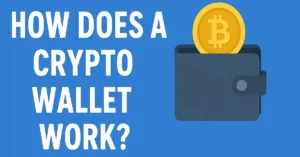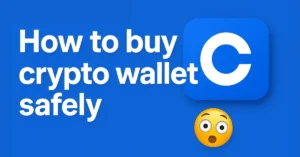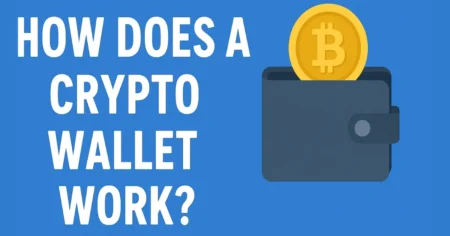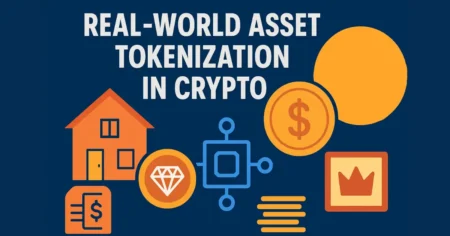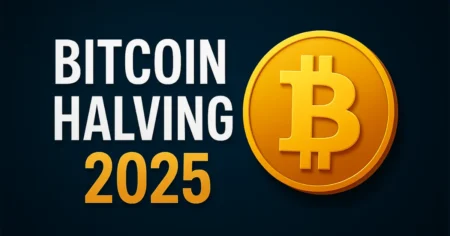DeFi vs CeFi
In the world of crypto, two models of financial systems are competing to reshape how we handle money: DeFi (Decentralized Finance) and CeFi (Centralized Finance). These aren’t just buzzwords—they’re fundamental approaches that define how trust, control, and value exchange work in the digital economy. If you’re even slightly interested in the future of finance, understanding this showdown is non-negotiable.
DeFi and CeFi operate in the same financial ecosystem but on different principles. CeFi mirrors traditional finance but in the crypto space—think of Binance, Coinbase, or Kraken, where someone else handles your funds. DeFi, on the other hand, flips the game. It’s finance without banks, without middlemen. Just code and community.
What makes this topic even more fascinating is how both models bring massive opportunities and real challenges. I’ve personally dipped my toes in both, and I’ll be honest—each has moments where it shines and times where it frustrated the hell out of me.
Let’s break this down step by step and get real about what makes DeFi and CeFi tick, how they’re different, and where they might take us.
Introduction to Modern Finance
The Shift from Traditional Finance
Traditional finance (TradFi) has ruled the world for centuries. Banks, stock markets, insurance companies—they all rely on intermediaries and centralized systems to move money around. But this structure is full of friction: delays, high fees, limited access, and questionable transparency. You’ve probably experienced it firsthand. Ever had a bank hold your money for “verification”? That’s traditional finance doing what it does best—slowing you down.
Now enter crypto. Bitcoin cracked open the door, showing us that digital money could exist without central banks. But it was Ethereum and smart contracts that took the vision further—creating a financial world that runs on algorithms instead of people.
What’s emerging now is a real alternative—a financial ecosystem built on blockchain technology, accessible to anyone with an internet connection. And at the heart of this shift? DeFi and CeFi, each trying to become the gateway to this new world.
Why Crypto Sparked a Revolution
The 2008 financial crisis was the wake-up call. People lost faith in banks and governments. When Satoshi Nakamoto released the Bitcoin whitepaper shortly after, it wasn’t just about digital currency—it was about giving power back to the people.
Crypto solved two core problems: trust and access. You no longer needed to rely on a bank to store your wealth or approve your transactions. With DeFi, that idea exploded further—you could now lend, borrow, and trade with just a wallet and a smart contract. CeFi helped onboard millions, making crypto easier for the everyday person.
Crypto sparked a revolution because it answered the modern-day need for autonomy and speed. Whether you’re a developer, an investor, or just tired of high fees and slow wires, the decentralized world has something to offer.
What is DeFi? (Decentralized Finance)
Core Principles Behind DeFi
DeFi is built on one bold idea: eliminate intermediaries. Instead of banks and brokers, you use code—specifically smart contracts—to carry out financial transactions. This shift changes everything. No more waiting for business hours. No more approval processes. Just plug into a protocol like Aave or Uniswap, and you’re in business.
The key principles of DeFi include:
- Decentralization: No single entity controls the protocol. It runs on blockchain networks like Ethereum, Polygon, or Solana.
- Permissionless Access: Anyone with a crypto wallet can interact—no KYC or lengthy forms.
- Transparency: Everything is public on the blockchain. You can see every transaction, every smart contract.
- Composability: DeFi protocols can interact with each other like building blocks—this is often referred to as “money Legos.”
It’s a system that’s built for the internet age—fast, borderless, and inclusive.
I remember my first DeFi transaction. I was nervous, mostly because it was so unfamiliar. But once I wrapped my head around wallets and smart contracts, I realized how empowering it was to be in full control of my funds. No middleman, no call centers—just me and the blockchain.
Popular DeFi Applications and Protocols
Here are some of the most widely used DeFi platforms:
- Uniswap – a decentralized exchange (DEX) for swapping tokens directly.
- Aave – a lending and borrowing protocol.
- Compound – another lending platform where users earn interest.
- MakerDAO – enables users to mint the DAI stablecoin using crypto collateral.
- Curve Finance – optimized for stablecoin trading.
Each of these protocols offers a piece of the puzzle. You can earn interest, take loans, provide liquidity, or trade—all without giving up control of your assets.
Real-World Examples of DeFi Use
Let’s say you’re holding Ethereum. Instead of letting it sit idle, you can use Aave to lend it out and earn interest. Or you can provide liquidity to a DEX like Uniswap and earn fees from trades. During the 2020–2021 DeFi boom, I personally earned over 15% APY on stablecoins—something banks don’t even come close to.
More than profits, it’s about empowerment. A friend in the Philippines used DeFi to access credit when local banks wouldn’t even consider her application. DeFi’s reach goes beyond financial gains—it can be life-changing.
What is CeFi? (Centralized Finance)
How CeFi Works in the Crypto Ecosystem
CeFi is like the bridge between traditional finance and crypto. It operates just like a bank or brokerage but within the crypto world. You create an account, verify your identity, and trust the platform to hold your funds.
These platforms offer services like:
- Buying/selling crypto with fiat
- Earning interest on deposits
- Crypto loans
- Custodial wallets
It’s familiar, especially if you’re coming from a banking background. Platforms like Binance or Coinbase offer intuitive dashboards, mobile apps, and customer support—features that are still lacking in many DeFi systems.
Major CeFi Platforms in the Market
When it comes to CeFi, several platforms have made a significant impact on how millions of users access crypto services. These centralized exchanges (CEXs) and financial platforms are easy to use and often serve as the entry point for newcomers into the crypto world.
Here are some of the leading CeFi platforms:
- Binance: Known as the largest crypto exchange by trading volume, Binance offers spot trading, futures, staking, savings accounts, and even its own blockchain (BNB Chain).
- Coinbase: Extremely popular in the U.S., it offers a clean user interface and is publicly traded, giving it a layer of traditional legitimacy.
- Kraken: Another respected platform, especially known for security and fiat onboarding.
- Crypto.com: Offers debit cards, a mobile-friendly app, and generous crypto rewards.
- Nexo & BlockFi (before the legal troubles): These platforms provided interest-bearing accounts and crypto-backed loans, much like a traditional bank.
What ties them all together is the centralized structure. You hand over control of your assets in exchange for convenience, speed, and customer service. I’ve personally used Binance and Coinbase extensively—Binance for its lower trading fees and range of tokens, and Coinbase for its ease of fiat deposits.
CeFi platforms usually provide insurance on custodial assets, which offers peace of mind. But remember, this insurance only covers platform failure—not market losses. And as we’ve seen with events like the Celsius and FTX collapses, trusting the wrong CeFi can be disastrous.
Where CeFi Still Dominates
CeFi may not be as “pure” as DeFi ideologically, but it still dominates several areas, especially for beginners. Here’s why:
- Ease of Use: It’s easier to sign up, fund your account with fiat, and start trading. You don’t need to worry about gas fees, smart contracts, or wallets.
- Fiat Onramps and Offramps: Transferring money from your bank to CeFi is typically seamless. Most DeFi platforms can’t handle fiat directly.
- Customer Support: When something goes wrong, CeFi gives you someone to contact.
- Institutional Trust: Hedge funds and major investors often prefer CeFi because it aligns with traditional regulatory and risk frameworks.
One of my first Bitcoin purchases was on Coinbase. I was able to link my bank account and start trading within an hour. That kind of simplicity can’t be understated for someone new to crypto. Sure, I later moved to DeFi for more control, but CeFi gave me the confidence to begin.
Key Differences Between DeFi and CeFi
Control and Custody
Arguably the biggest difference between DeFi and CeFi is who holds your money.
In DeFi, you are the custodian of your assets. Your private keys = your crypto. Lose them, and it’s game over.
In CeFi, the platform holds your assets on your behalf. This makes recovery easier in case you lose access to your account, but it also means you’re trusting them not to mess things up.
DeFi offers true sovereignty. It’s empowering but scary. There’s no one to call if you mess up. I once sent Ethereum to the wrong contract address—$400 gone, forever. That’s the cost of full control. CeFi, on the other hand, gives a safety net—but that net can disappear, as many learned during the FTX collapse.
Accessibility and Permission
Another major distinction is how open each system is.
DeFi is permissionless. Anyone, anywhere can access DeFi platforms using just a crypto wallet. No ID verification needed.
CeFi is permissioned. Platforms must follow KYC (Know Your Customer) and AML (Anti-Money Laundering) laws. You need to verify your identity before using most features.
While CeFi’s model helps governments track illegal activity, it also excludes people who don’t have access to proper documentation or banking infrastructure. That’s a large portion of the global population.
One of my closest friends from India struggled to pass KYC verification on a CeFi platform because his government-issued ID didn’t match the exact formatting requirements. But when he switched to DeFi, none of that mattered—he could participate freely.
Transparency and Trust
In DeFi, everything is on-chain and open. You can literally inspect the code of the platform and track every transaction. This transparency builds trust in the system, not in people.
CeFi, meanwhile, operates like a black box. You trust the team behind the scenes. They might publish audits, but you don’t have real-time visibility into their operations.
Transparency became a huge talking point during the FTX disaster. People realized that even the biggest CeFi brands could manipulate customer funds. With DeFi, while smart contract bugs can happen, at least the risk is visible and quantifiable.
Pros and Cons of DeFi and CeFi
Advantages of DeFi
- Complete Control: You own your keys and your funds.
- Global Access: No geographic restrictions or KYC hurdles.
- High Yields: DeFi often offers better returns through staking, lending, or liquidity mining.
- Transparency: All transactions and smart contracts are public and verifiable.
DeFi is the Wild West—but it’s open to all. I’ve used it to earn passive income on stablecoins at rates banks could never match.
Disadvantages of DeFi
- Steep Learning Curve: The UI/UX is not beginner-friendly.
- Risk of Smart Contract Hacks: Bugs and exploits are common.
- No Customer Support: Make a mistake? You’re on your own.
- High Gas Fees: Especially on Ethereum, transaction fees can be brutal.
I’ve paid over $100 in gas fees during peak congestion—and that’s not sustainable for casual users. Mistakes can also be costly. DeFi is powerful, but it demands responsibility.
Advantages of CeFi
- User-Friendly: Designed for everyday users with clean interfaces.
- Regulated: Adheres to legal standards, which can offer peace of mind.
- Fiat Integration: Easy to deposit and withdraw traditional money.
- Support Channels: You can get help when you need it.
When I onboarded a family member into crypto, I chose CeFi. It was the easiest way for them to start.
Disadvantages of CeFi
- Lack of Control: You don’t truly own your crypto—platforms do.
- Potential for Abuse: Mismanagement of funds can lead to platform collapse.
- Regulatory Risks: CeFi platforms are heavily impacted by government rules.
- Limited Privacy: You must share personal information.
The FTX implosion highlighted these risks. Billions lost, not because of a hack—but because users trusted a centralized authority too much.
Use Cases: When to Use DeFi vs CeFi
Long-Term Investments
When it comes to long-term crypto investments, both DeFi and CeFi can play a role, but they cater to very different needs and risk profiles.
If you’re a long-term HODLer (like me), CeFi platforms can be appealing for their simple savings features. For example, platforms like Nexo or Crypto.com allow you to deposit stablecoins or popular tokens and earn interest without actively managing your portfolio. The rates aren’t always sky-high, but the ease of use is undeniable. You simply deposit and let the platform handle the rest.
However, DeFi offers much higher returns—sometimes double or even triple what CeFi provides. Protocols like Yearn Finance, Lido, and Curve give you access to staking and yield farming strategies that can significantly boost your holdings. The catch? You need to understand smart contracts, wallet management, and gas fees.
Personally, I split my long-term crypto between both worlds. I use CeFi for stable, low-effort gains and DeFi for more aggressive strategies when I can monitor them closely. It’s a balanced approach—passive security in CeFi, and active earning in DeFi.
Short-Term Trading
Short-term traders often prefer CeFi platforms, and for good reason. Centralized exchanges offer advanced trading tools—limit orders, stop-losses, margin trading—that just aren’t widely available in DeFi (yet).
Trading on platforms like Binance or Kraken is fast, with high liquidity and real-time data. The order books are deep, slippage is low, and you can even automate strategies. These are crucial factors for anyone doing day trading or quick arbitrage.
DeFi trading, in contrast, involves using DEXs like Uniswap or Sushiswap. Trades are done via liquidity pools, and while it’s improving, the slippage can be significant—especially with large orders. Also, gas fees can eat into your profits if you’re not careful.
That said, DeFi gives access to tokens that haven’t yet hit major exchanges, offering early entry opportunities. I’ve found some real gems through DeFi before they were listed on CeFi platforms. If you’re into hunting small-cap tokens or experimenting with new protocols, DeFi has an edge.
Yield Farming, Lending, and Staking
These are areas where DeFi truly outshines CeFi—if you know what you’re doing.
Yield farming involves moving your assets across protocols to find the best returns. It’s not for the faint-hearted, but the returns can be huge.
Lending platforms like Aave or Compound let you lend your crypto for passive income or borrow against it without selling.
Staking is available in both worlds, but DeFi often gives more flexibility. For example, Lido allows you to stake ETH while keeping it liquid via stETH.
CeFi does offer staking too—Binance and Coinbase both allow you to stake assets like ETH or ADA with just a click. It’s easier, but the returns are often lower and you’re giving up custody.
During the last bull run, I earned over 30% APY in DeFi by staking stablecoins on Curve and farming LP tokens. But it wasn’t passive—I had to monitor rewards, manage risks, and rebalance positions often. CeFi offers convenience; DeFi offers control and opportunity—if you’re ready to work for it.
Risks and Security Factors
Smart Contract Vulnerabilities in DeFi
Smart contracts are the backbone of DeFi. They automate everything from trading to lending. But they’re also a double-edged sword. If there’s a bug in the code, it can be exploited—leading to massive losses.
We’ve seen it happen. The infamous DAO hack in 2016 drained $60 million due to a vulnerability in the smart contract. More recently, the Poly Network hack saw $600 million exploited before the funds were returned.
Even well-audited protocols can suffer from flash loan attacks or coding oversights. I once deposited funds into a newly launched DeFi project that later got rug-pulled—luckily I had only risked a small amount, but the lesson was clear: only use reputable, audited platforms.
Before interacting with a DeFi protocol, always:
- Check for third-party audits.
- Review community feedback.
- Start with a small test amount.
DeFi gives you full control—but with great power comes great responsibility.
Platform Risks in CeFi
While DeFi risks are often technical, CeFi risks are centralized and operational. The downfall of FTX, Celsius, and Voyager reminded everyone that CeFi platforms can mismanage user funds, operate with poor transparency, or even collapse overnight.
These platforms often promise high returns, but behind the scenes, they may engage in risky strategies without your knowledge. Worse, if something goes wrong, your assets are likely locked in bankruptcy proceedings. That’s not theoretical—I had crypto stuck in Celsius when they froze withdrawals. It took months to see any recovery.
Here’s what to watch out for in CeFi:
- Lack of proof-of-reserves.
- No transparency about how funds are used.
- Overly generous returns that seem unsustainable.
- Poor regulatory track record.
CeFi platforms can be convenient and fast, but always do your due diligence. Don’t store more than you can afford to lose, and consider using hardware wallets for long-term holdings.
Regulatory Risks for Both Models
Governments worldwide are scrambling to regulate the crypto space, and both CeFi and DeFi are in their crosshairs.
For CeFi, regulation is more straightforward. Platforms must register, adhere to KYC/AML laws, and comply with local financial rules. This can be a good thing—it provides user protection and prevents fraud. But it also limits access for those in restrictive jurisdictions.
For DeFi, things are murkier. There’s no company or CEO to regulate. How do you apply laws to code? Some countries, like the U.S., are pushing for tighter rules, even suggesting developers could be liable for the behavior of decentralized protocols.
I believe regulation will eventually catch up, and DeFi projects will need to implement some level of compliance. But until then, users need to be cautious. One wrong interaction can lead to a legal headache—or losing access to your funds.
My Personal Experience with DeFi and CeFi
Starting Out with DeFi (Wallets, DEXs, Gas Fees)
I still remember the first time I used DeFi—it was confusing, exhilarating, and honestly, kind of scary. I had to set up a MetaMask wallet, learn how to transfer Ethereum, and then connect that wallet to a decentralized exchange (DEX) like Uniswap. It wasn’t just click-and-go. There were gas fees to calculate, slippage tolerances to adjust, and contracts to double-check.
My first DeFi transaction? Swapping ETH for a token I’d never heard of on Uniswap. I spent $50 on the token, and nearly $30 on gas fees. At the time, it felt like burning money. But with experience came confidence. I started using Aave to lend out stablecoins, yield farming on Curve, and even tried staking ETH through Lido.
Here’s what I learned:
- Always double-check contract addresses from trusted sources like CoinGecko or CoinMarketCap.
- Use hardware wallets for serious funds to avoid phishing attacks.
- Be ready for wild fees—Ethereum gas can be outrageous during peak hours.
- Start small and experiment slowly.
It wasn’t always smooth. I’ve interacted with shady projects and lost money to a failed token. But DeFi also gave me more freedom than any bank ever did. I could access financial tools 24/7 without asking for permission.
My Learning Curve with CeFi (Onboarding, KYC, Customer Support)
My CeFi journey began with Coinbase. Signing up was simple—email, password, and ID verification. Within hours, I was buying Bitcoin with my debit card. No complex setup, no technical jargon. It felt like online banking, but cooler.
I’ve used several CeFi platforms since—Binance, Crypto.com, Nexo. What I liked most:
- Fast fiat deposits and withdrawals: My bank linked seamlessly with Coinbase.
- Customer support: I once had an issue with a delayed withdrawal, and Binance support resolved it in under 24 hours.
- Mobile apps: CeFi platforms are built for convenience—swipe to trade, check portfolios in real-time, and get price alerts.
But it wasn’t all perfect. I had trouble verifying my account on Crypto.com because of a small mismatch in my ID. During the FTX debacle, I panicked and withdrew all my funds from every CeFi platform. That incident taught me one key rule—not your keys, not your coins.
Now I treat CeFi as a convenient onramp. I use it to buy crypto, then move most of it to self-custody or into DeFi for better yields and more control. It’s a strategy that gives me the best of both worlds.
Regulatory Landscape for DeFi vs CeFi
Global Regulations on DeFi
DeFi is like the wild west of finance—exciting but unregulated. Governments across the globe are trying to figure out how to handle decentralized protocols. Since there’s often no CEO or legal entity to go after, regulators struggle to apply traditional rules.
That said, things are tightening. The European Union introduced the MiCA framework, which will likely affect DeFi front-ends and developers. In the U.S., the SEC has gone after DeFi projects it deems to be offering “unregistered securities.” Even developers like those behind Tornado Cash have faced legal action.
As someone using DeFi regularly, I’ve become more cautious. I avoid shady platforms, follow communities on Discord and Twitter, and keep an eye on the latest news. The regulatory landscape may not be clear yet, but it’s evolving quickly—and users need to stay informed.
How CeFi Adapts to Legal Frameworks
CeFi platforms have no choice but to play by the rules. They operate like fintech firms or digital banks, complying with all local and international financial regulations. This includes:
- KYC/AML compliance to prevent money laundering.
- Licensing in multiple jurisdictions to stay legally operational.
- Regular audits and financial disclosures to ensure transparency.
Some platforms, like Coinbase, have embraced regulation and used it to build trust with users. Others, like Binance, have had a more rocky path—facing scrutiny in several countries before adapting their compliance structures.
CeFi’s ability to adapt to legal frameworks makes it safer for mainstream adoption. It also attracts institutional money, which is essential for mass growth. But this comes at a cost—loss of privacy, tighter access, and potential censorship.
Future Outlook for Compliance
The future of DeFi and CeFi will likely be shaped by regulation. Here’s what to expect:
- DeFi will evolve into more compliant forms. We’ll see KYC-enabled DeFi protocols, DAO structures with legal entities, and regulated smart contract platforms.
- CeFi will become more transparent, with Proof of Reserves and better fund management to avoid another FTX-style collapse.
- Hybrid models may emerge—offering the decentralization of DeFi with the security and ease of CeFi.
As an active user of both systems, I’m hopeful. Regulation doesn’t have to kill innovation. Done right, it can protect users and legitimize crypto in the eyes of the world.
Which One is Better for Beginners?
User Experience and Ease of Use
If you’re brand new to crypto, CeFi is the clear winner in terms of ease. Platforms like Coinbase and Binance are built for non-tech-savvy users. You can buy Bitcoin in seconds, stake with a few clicks, and withdraw profits straight to your bank.
DeFi, on the other hand, demands technical knowledge. You’ll need to understand wallets, seed phrases, contract addresses, slippage, and gas fees. It can be overwhelming at first.
That said, once you get the hang of it, DeFi becomes second nature. There’s a sense of empowerment when you fully control your money and don’t rely on third parties.
Educational Resources and Community Support
Both CeFi and DeFi have robust learning communities. CeFi platforms often provide in-app tutorials, help centers, and reward-based learning modules. Coinbase’s “Earn” program is a great example—it pays users in crypto for watching educational videos.
DeFi’s education is mostly community-driven. Reddit, YouTube, and Twitter are packed with DeFi content creators. Some DAOs even have structured onboarding programs. I learned a ton just by joining Discord channels and asking questions.
For beginners, I recommend starting with CeFi to build foundational knowledge. Once you’re comfortable, gradually experiment with DeFi—starting with small amounts and well-known platforms.
The Future of Finance: Will DeFi Replace CeFi?
Potential for Integration
Rather than a winner-takes-all scenario, I believe DeFi and CeFi will merge into a hybrid model. We’re already seeing it—platforms like Coinbase and Binance are exploring DeFi integrations. Wallets like MetaMask are adding fiat onramps. The lines are blurring.
This fusion will allow users to enjoy the best of both worlds: CeFi’s convenience with DeFi’s autonomy.
Hybrid Models and Their Promise
Hybrid platforms are the future. Imagine a wallet where you can buy crypto with fiat, stake it through a smart contract, and access a help desk—all in one place. These models are being built, and they will bring the next billion users into crypto.
Final Thoughts on Mass Adoption
CeFi brought crypto to the mainstream. DeFi is here to finish the job. As the ecosystem matures, we’ll see more collaboration, smarter regulation, and tools that make crypto usable for everyone.
My advice? Don’t pick sides. Learn both. Use both. The future of finance won’t be centralized or decentralized—it’ll be both.
Conclusion
The battle between DeFi and CeFi isn’t about who wins—it’s about giving people choices. Whether you want full control of your assets or prefer a simple user interface with customer support, both models serve important purposes.
I’ve used both systems extensively. CeFi gave me a safe entry point. DeFi gave me the freedom and opportunity to grow. Together, they’ve shaped how I handle money in a digital world.
Whichever path you choose, make sure you educate yourself, stay safe, and never stop exploring. Finance is changing—don’t get left behind.
FAQs
Is DeFi safer than CeFi?
Not necessarily. DeFi offers more transparency but also carries risks like smart contract bugs. CeFi is easier to use but can collapse if mismanaged.
Can I use both DeFi and CeFi together?
Yes! Many people buy crypto through CeFi and move it to DeFi for earning higher yields or using dApps.
Which is better for earning passive income?
DeFi usually offers higher returns, but CeFi is easier and safer for beginners. Choose based on your risk tolerance and technical comfort.
How do I start using DeFi safely?
Start with a small amount. Use a secure wallet like MetaMask, stick to well-known protocols, and never invest more than you can afford to lose.
Will CeFi disappear in the future?
Unlikely. CeFi will continue evolving and may coexist with DeFi through hybrid models. Both have roles to play in the future of finance.
Also, read
- What is a Crypto Wallet and How Does It Work? – Coinsify
- 10 Crypto Terms Every Beginner Must Know – Coinsify
- What is Blockchain Technology – Complete Guide – Coinsify
- How to Buy Crypto Safely in 2025 – Complete Guide – Coinsify
- Bitcoin vs Ethereum: Key Differences Explained – Complete Guide
- Ultimate Blockchain Glossary: Learn Blockchain Terms Easily
- How to Buy Bitcoin Safely (Complete Beginner’s Guide)
- Top 10 Crypto Wallets for Beginners (2025 Edition)
- What is Cryptocurrency? A Beginner-Friendly Guide (2025)
